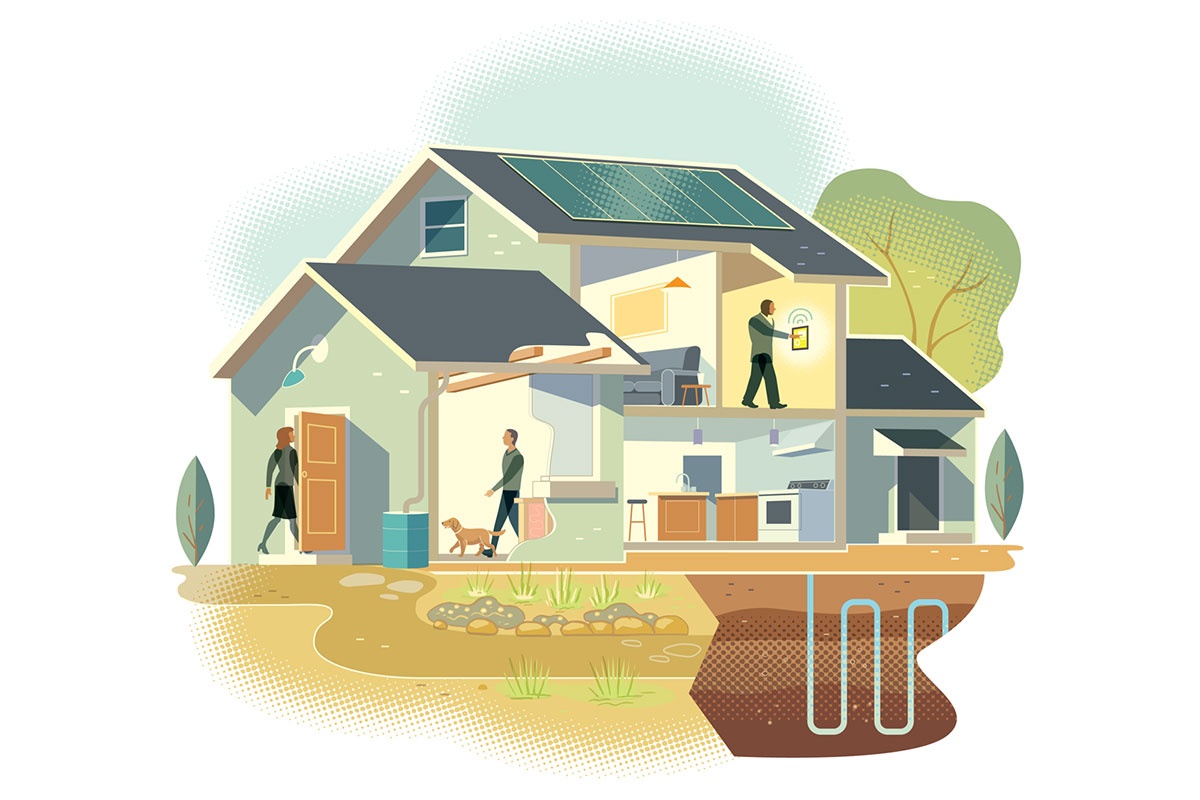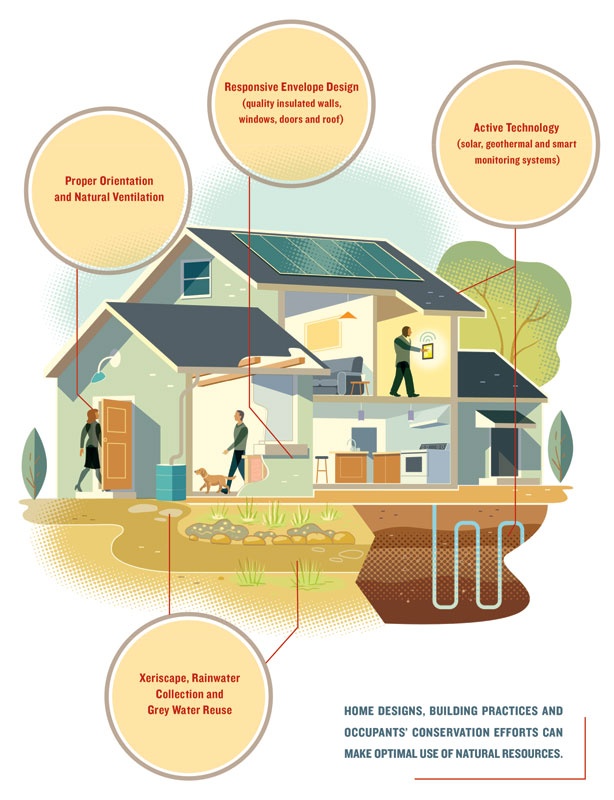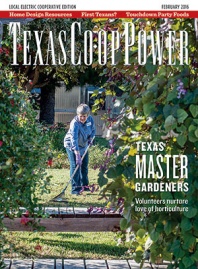When veteran Austin architect Scott Ginder drew up plans for the custom home his family would live in, he knew it would take more than a high-tech thermostat and energy-efficient lightbulbs to make the house stand out. He wanted to create a model of sustainability. With that goal in mind, Ginder, who founded Forge Craft Architecture + Design with partner Rommel Sulit in 2013, needed not only to embrace the latest technology but also satisfy his family’s expectations for comfort.
“Ten years ago, you could not have convinced me that you could actually design and build a net-zero house,” says Ginder, using the industry phrase for a home that produces as much energy as it uses. “But if we were going to build a home with our values, and propose that to clients, I needed to walk the walk.”
Those desires led him to think beyond traditional design elements and explore new technologies that are not yet commonplace in most American homes. He installed a state-of-the-art HVAC system, a multizone heating and cooling system that employs what’s known as variable refrigerant flow. This VRF technology can improve HVAC efficiency by about 25 percent. With no gas connection to his house, Ginder also relied on a 66-gallon electric water heater that recirculates the home’s interior warm air to heat the water and then channel cool, dry air into the air-conditioning ducts.
“In a typical house, hot water is about 20 percent of your energy costs,” says Ginder. “With the system we used, I expect to lower that by a third.” It all adds up to substantial savings, he notes.
To further save on energy, Ginder kept the size of his home—which accommodates him, his wife, Andrea, and their two young children—to 2,000 square feet. Doors and windows were scaled and positioned to limit the effect of outdoor temperatures. Ginder further boosted energy efficiency by heavily insulating the interior with foam panels and adding spray-on barriers between the attic rafters, thereby sealing the building envelope. The finished house was airtight.
But you don’t have to head for Austin or other big Texas cities to find homeowners who embrace green-building technology in the hopes of having an energy-efficient household. Town residents and ranch families served by electric cooperatives across Texas pursue strategies to improve energy efficiency for new homes as well as older homes, installing solar panels and individual wind turbines, and upgrading climate controls.
As of 2015, the Solar Energy Industries Association, a national trade group, ranked Texas the 10th state overall with 387 megawatts in cumulative solar capacity—roughly the capacity to energize 41,000 homes, though the majority is used commercially. Even so, the cost of residential solar installation has dropped about 8 percent since 2014.
Some cooperatives have taken steps to demonstrate innovative building options. Bluebonnet Electric Cooperative completed its demonstration Eco-Home on the outskirts of Brenham in 2012. The house boasts solar panels and a wind turbine mounted on a 40-foot pole, capable of generating 2.4 kilowatts. There’s a geothermal system that uses Earth’s temperature for heating and cooling by pumping water into the ground and then circulating it through the house. “It shows what you can do on your ranch and farm,” says the narrator of the co-op’s online video.
Will Holford, manager of public affairs at Bluebonnet EC, says it makes sense that rural Texans would be attracted to energy conservation and the promise of technology to improve energy efficiency. In addition to the financial incentive to build homes that create their own energy, Holford notes that co-op membership statewide has its roots in farming and ranching communities with deep ties to the land, and they have an abiding interest in sustainability and preservation when it comes to natural resources.
The money that can be saved by generating one’s own electricity is another aspect of energy-efficiency standards touted by Ginder, who has a 7.2-kilowatt solar array on his Austin roof.
“There’s a great interest in this not just from our members, but from all across Central Texas,” Holford says of Bluebonnet EC’s Eco-Home. “Not a day goes by that we don’t have two to three drop-ins, as well as regularly scheduled tours.”
Business is booming for Lloyd Lee, owner of Native, a Bastrop firm that builds custom homes and retrofits established homes with energy-efficient amenities. He did not work on the Ginder house, but Lee takes a similar approach to home efficiency. To help people transform houses into what are sometimes called “passive homes,” which marks improved energy efficiency, Lee installs federally Energy Star-certified windows to cut back on thermal loss, uses spray foam to better seal building envelopes and mounts solar panels.
Native takes a similar approach regarding water, integrating rainwater catchments and providing additional filtration so that the water provided by these systems is of a superior quality for drinking and cooking. “People who live on rainwater,” he testifies, “it’s almost like a cult.”
Even as green construction grows more popular, however, green-building experts agree that home efficiency requires more than technology. Energy conservation requires that consumers educate themselves about opportunities for saving electricity. Even Ginder faces an uphill battle when it comes to persuading his family members to eschew air conditioning in favor of opening a window, or trade the convenience of the clothes dryer for a clothesline to dry their laundry.
“Energy is quantifiable, and that’s why we tend to talk about it,” Ginder says. “But we tend to forget there is a user component to all this. A five-star green house can be a two-star home if the people living there don’t understand all the passive aspects.”
——————–
Dan Oko is a Houston writer; his website is danoko.com.



